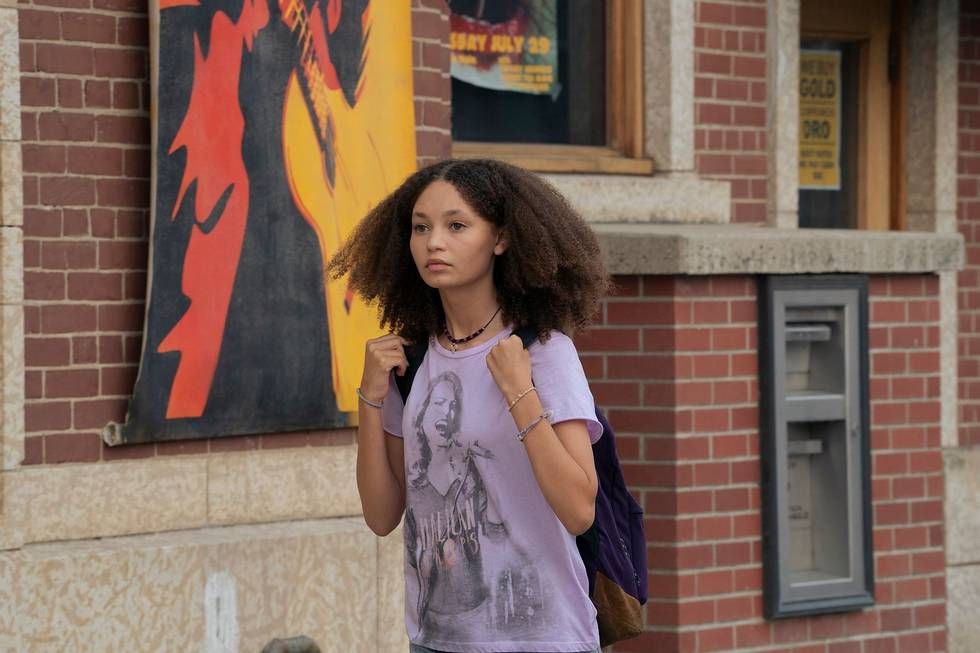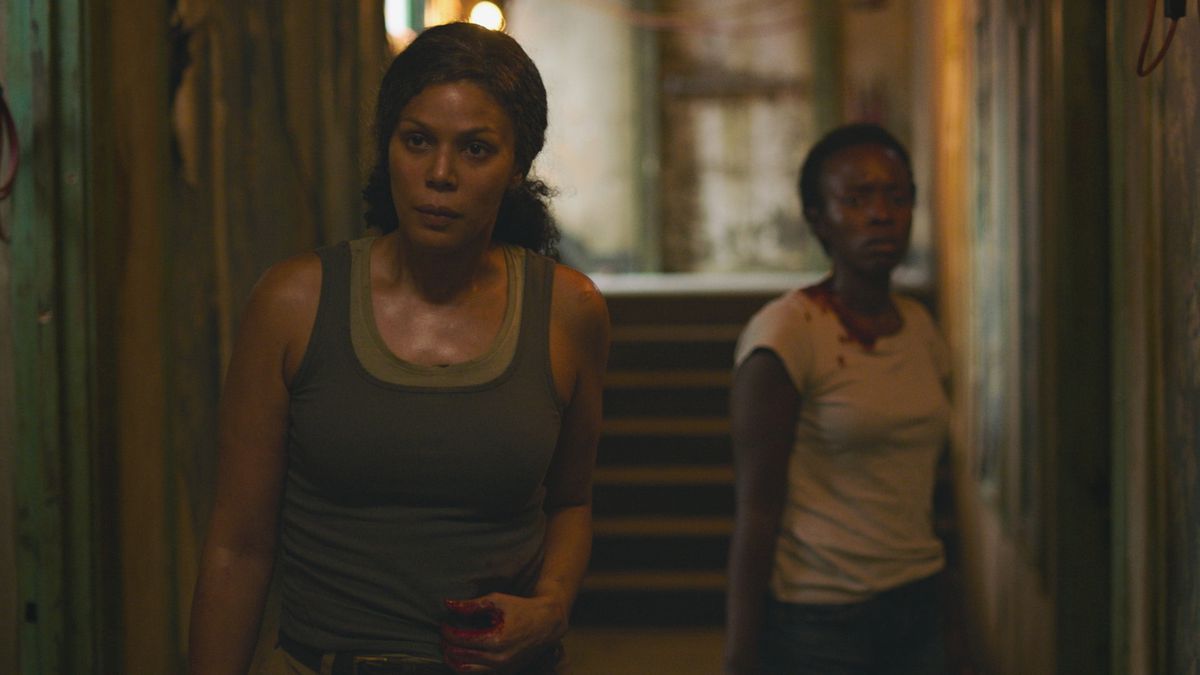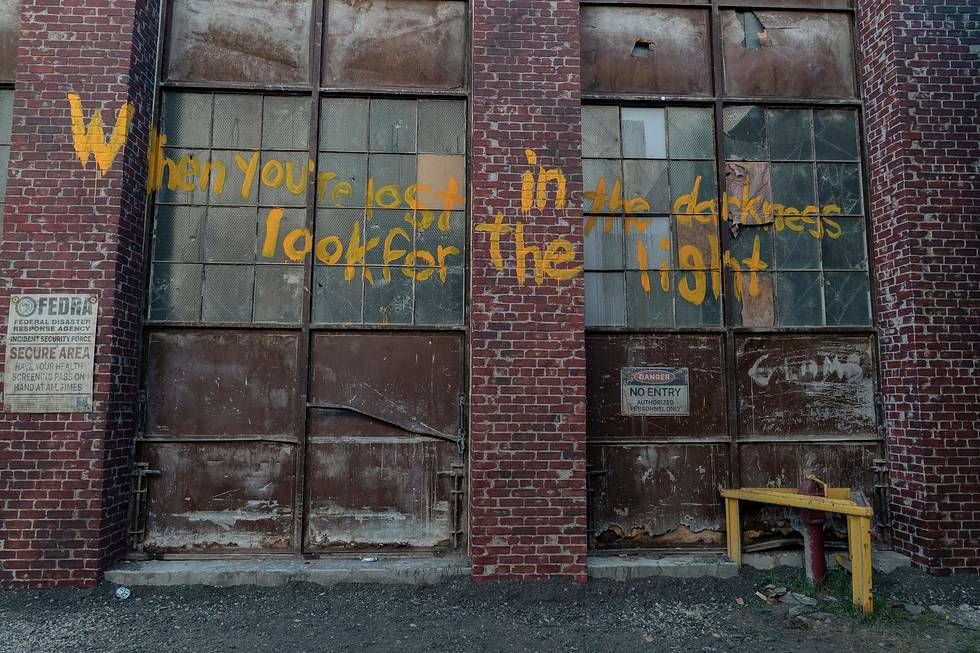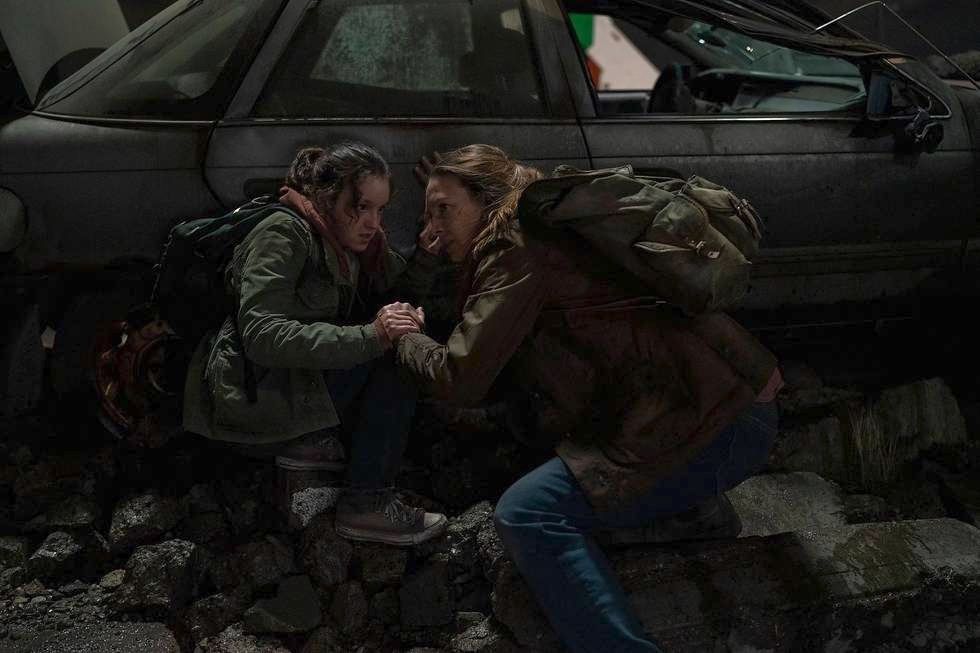HBO’s The Last of Us is a way to revisit the iconic and beloved video game of the same name — to revel in the ways it’s both unchanged and entirely different. For dedicated fans of the game, the appeal of The Last of Us is not necessarily in being surprised by twists and turns of the story; rather, it’s to see the franchise in a new light, picking out the little details that point back to the original media.
There’s plenty to see in that regard. Video games are known for their Easter eggs, the small and obscure references hidden as little surprises in the game. And so it makes sense that HBO’s The Last of Us would do the same, to make subtle (and not so subtle) nods to all the The Last of Us-heads out there. The Last of Us Part 1 felt like it so badly wanted to be a movie or show, and now the TV show is switching that up — at least in one way.
Episode 1 Easter eggs
Halican Drops

Halican Drops is the name of the band on the T-shirt Joel’s daughter Sarah (played by Nico Parker) is wearing at the beginning of the show — and the game. There’s no real significance for the band in the game, other than a few posters, but the back of the T-shirt does foreshadow how the game plays out: Each tour stop is another location that Ellie and Joel will visit throughout their journey.
Aside from Sarah’s T-shirt, there are Halican Drops stickers in windows, too — at least according to set pictures.
Back-seat driving
When Joel, Tommy, and Sarah are trying to escape Austin during the chaos of the initial outbreak, the show’s directors make clever use of the camera angle to make The Last of Us feel like the video game. It’s all in the third-person view, with the camera in the back seat. This is exactly how the game is shot from the truck — you’re still playing as Sarah at that point, and she’s in the back seat. Several of us noted instantly that it just feels like a video game during these shots, a trick that’s of much better use here than in other TV adaptations of games, like Halo, which tried the first-person view — including player UI.
Sarah waking up
Sarah wakes up in her bedroom in the middle of the night in both the game and the TV show, stumbling around sleepily in the dark to see what’s going on. Both scenes provide a little more context but in different ways. In the video game, you control Sarah, and she’s looking through her house in the dark. You’re not on a set path, and you can pick up things in the house, which provide some more context — one item is a newspaper that details how admittance to local hospitals is up by more than 300%. In the video game, an infected person comes busting through the glass door, but Joel shoots him, before they run outside and Tommy shows up, right on time.
The Last of Us TV show has Sarah waking up, alone, because Joel went to bail Tommy out of jail. She ends up back at the neighbor’s house, bringing their scared dog home. That’s when she gets a very clear glimpse of what’s going on: The infected old lady is munching on her housemates. This scene sets up the horrors of the infected in a different way, giving some more context to show viewers what’s going on.
Joel’s wrench
Tommy and Joel pull up to their neighbor’s house just as Sarah is getting attacked by the infected old lady, but thankfully Joel has a formidable weapon: a wrench. The heavy wrench looks to be of forearm’s length and probably quite handy while they’re escaping the city, but Joel drops it right away.
Why not save it for later use? Toss it into the back of the pickup truck and you don’t even have to hold it. Our best guess is that this is a nod to the video game — in The Last of Us Part 1 and The Last of Us Part 2, you get max three hits on your everyday melee weapons. They break all the time, and that’s by design. The Last of Us is a game about survival, and you have to scavenge for everything, including bullets and, yes, wrenches for hitting infected things.
Marlene

Does Marlene in The Last of Us TV show sound familiar? That’s because the same actor plays both roles. Merle Dandridge plays Marlene in The Last of Us Part 1 and The Last of Us Part 2, taking the role on a third time for the HBO adaptation.
When you’re lost in the darkness

The full phrase, When you’re lost in the darkness, look to the light, appears several times in the show, and it’s plastered all over the games. The phrase is graffiti on walls throughout Boston (and likely elsewhere), a symbol and motto for the revolutionary group the Fireflies — the people who are fighting the oppressive military in the country’s quarantine zones. Marlene’s one of them, and an important one at that: She’s the leader of the Boston faction, and the person who puts Ellie in Joel and Tess’ care.
Curtis and the Viper 2
Curtis and the Viper 2 is the movie that Sarah picks up from the neighbor’s house in The Last of Us, pulled from a shelf alongside the likes of Pink Panther and Murderball. Unlike those two, Curtis and the Viper 2 isn’t a real movie, but it’s still an important one. People who have played The Last of Us Part 2 will remember it tearfully — it’s brought up in the second game as a cheesy ’80s movie, but one that was going to mean a lot to the two people watching it.
“The Long and Winding Road”
When Ellie and Joel are waiting for Tess to scout for the escape from the Boston quarantine zone, Ellie picks up the book of No. 1 music hits and flips through it. There’s one page marked off with a piece of paper — the radio code for Joel and Tess’ smuggling operation. The page it opens to is easy to miss, but may be a nod to the franchise — The Beatles’ “The Long and Winding Road.” This could be reference to the long, winding road that will take Ellie and Joel across the United States, or maybe the long and winding road it’s been since a The Last of Us movie adaptation was announced in 2014.
Bigwig’s daughter
In the same scene where Joel and Ellie are discussing the radio code, Joel starts to question Ellie on her own life — why Marlene and the Fireflies are going through so much trouble to smuggle her out of Boston. No one knows yet of Ellie’s true condition — that she’s immune — and she’s sworn to keep it a secret. Joel asks if Ellie is a “bigwig’s daughter” or something, and Ellie responds that it’s “something like that.” These few lines are pulled straight from the game, but in those scenes it’s Tess talking to Ellie when they’re escaping the zone.
Escaping the quarantine zone

Ellie, Joel, and Tess’ escape from the Boston quarantine zone has a few shots that are heavy references to the game — the overgrown world is dark and gnarled up with cars and buses to crawl under and through. But there’s one scene in particular that stood out for its similarities to an iconic level in The Last of Us Part 1: Chapter 3, “The Outskirts.” Crawling through tunnels and debris, the trio has to dodge spotlights and flashlights from the military guarding the quarantine zone wall — spots in the game where it’s essential to play the game as stealthily as possible. Visually, the show does a clever job of mimicking that feeling.
- SEO Powered Content & PR Distribution. Get Amplified Today.
- Platoblockchain. Web3 Metaverse Intelligence. Knowledge Amplified. Access Here.
- Source: https://www.polygon.com/23550840/last-of-us-easter-eggs-game-tv-hbo-season-1



